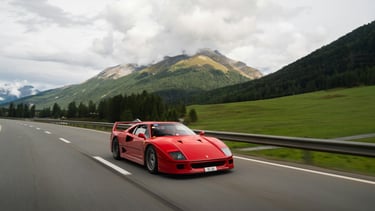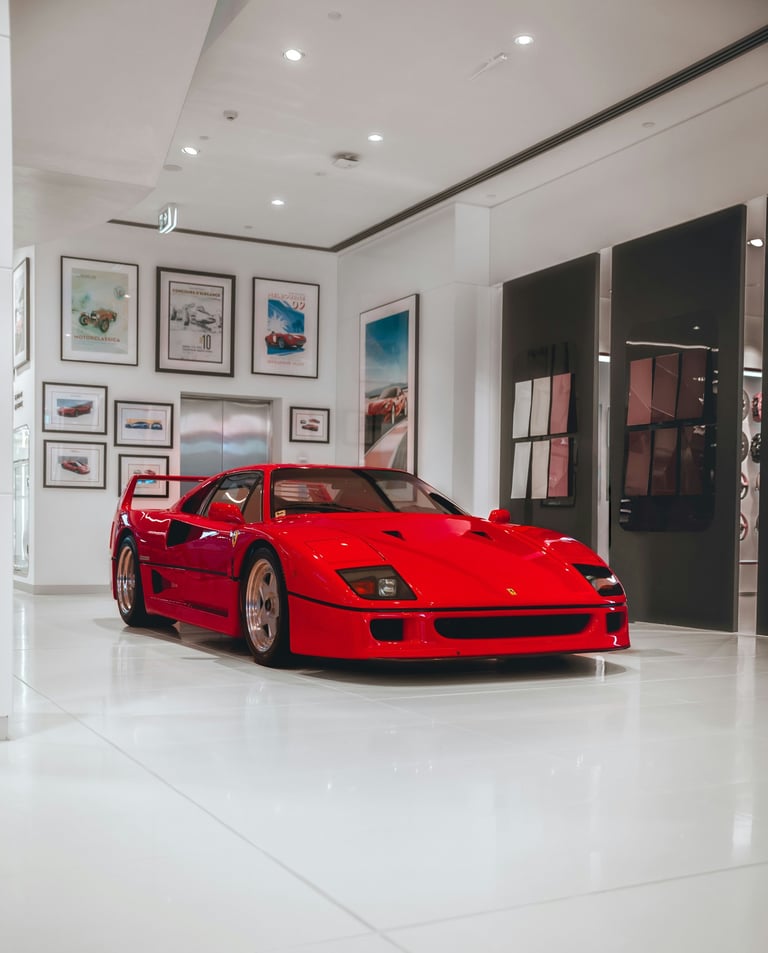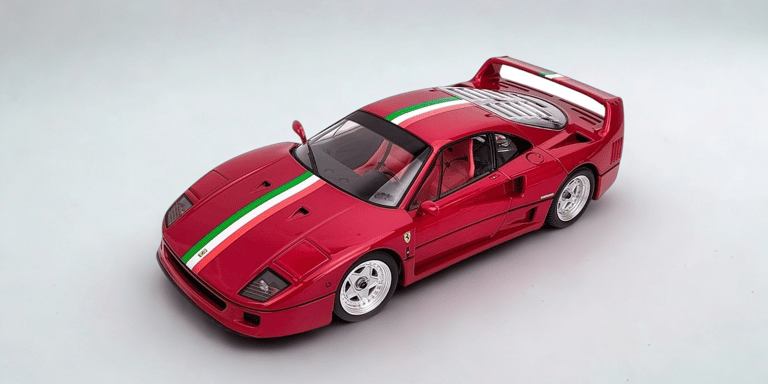Ferrari F40 Miniature 1:18: Enzo Ferrari's Last Legacy
Few cars have the historical weight and mythical aura of the Ferrari F40. Launched in 1987, it was created to celebrate Ferrari's 40th anniversary, becoming the last model approved by Enzo Ferrari during his lifetime. With a twin-turbo engine, lightweight chassis, and unmistakable design, the F40 was not just a sports car: it was a brutal machine, built without compromises to comfort, but with a total focus on performance. To this day, it is considered one of the most iconic and desired supercars in the world.
CARS & CLASSIC
Driven Vault
9/10/20253 min read


History and Origin of the Model
The Ferrari F40 was born as a celebratory project. In the mid-1980s, the Maranello brand sought to create a car that would showcase its full potential in technology and performance.
The project began with the 288 GTO Evoluzione, a racing version that never officially competed. This prototype served as the basis for the development of the F40, which was unveiled at the 1987 Frankfurt Motor Show.
For Enzo Ferrari, the F40 would be his last great gift to the world, as he passed away in 1988, just one year after its launch. This direct connection to the "Commendatore" is part of what makes the model so special.
Cultural Impact and Exclusivity
The Ferrari F40 quickly became a living legend. It was the first road car to exceed 320 km/h (200 mph), setting a new standard for supercars.
Enzo's last Ferrari: the historical connection with the founder makes this model unique.
Exclusivity: even with just over 1,300 units, its rarity and importance guarantee extremely high values today.
Presence in pop culture: the F40 has appeared in games like Need for Speed, Gran Turismo, and Forza Horizon, as well as in magazines and automotive programs.
Renowned collectors: big names like Eric Clapton, Nigel Mansell, and other drivers and artists had an F40 in their collections.
More than just a car, it became a symbol of the 1980s, an era of excess, speed, and bold design.
Rare Facts
No electronics: the F40 had no traction control or ABS, requiring raw skill from the driver.
Minimum weight: to save weight, even the side windows were made of plexiglass with small ventilation openings.
Faster than the competition: at the time, it surpassed rivals like the Porsche 959, becoming the fastest Ferrari in history at the time.
Explosive turbo: the turbo lag was so intense that acceleration felt like a punch when the engine reached full power.
Timeless collectible: despite production exceeding expectations (more than 1,000 cars were made to meet demand), each F40 is treated as a work of art.
Design and Engineering
The Ferrari F40 was designed by Pininfarina and was designed to be both aggressive and functional, with a strong focus on aerodynamics and lightness.
Design highlights:
Body in carbon fiber, Kevlar, and aluminum: innovative materials for the time.
Iconic lines: low front end, massive air intakes, and the trademark fixed rear wing.
Minimalist interior: no frills—no radio, air conditioning, or fancy finishes.
Ultralight doors and hood: designed for easy access and reduced weight.
The philosophy was clear: less weight, more speed. The result was a car that looked more like a street-legal race car than a traditional supercar.
Technical Specifications
Engine: 2.9L twin-turbo V8 (90°)
Power: 478 hp at 7,000 rpm
Torque: 577 Nm
0–100 km/h (0–62 mph) time: 4.1 seconds
Top speed: 324 km/h (a record for the time)
Weight: ~1,100 kg
Transmission: 5-speed manual
Production: 1,315 units between 1987 and 1992
Launch price: approximately US$400,000
Current value: could exceed US$2 million at auction


Ferrari F40
The Ferrari F40 is not just a supercar—it is a landmark in the history of motorsport. With its brutal design, visceral twin-turbo engine, and direct connection to Enzo Ferrari, it achieved a status that goes beyond performance: it has become an eternal symbol of Ferrari and the golden age of supercars.
Today, owning an F40 is like having a piece of automotive history in your garage. For those passionate about collectible classics like the Ferrari 288 GTO, the Porsche 959 or the Lamborghini Countach, the F40 is simply the Holy Grail.


